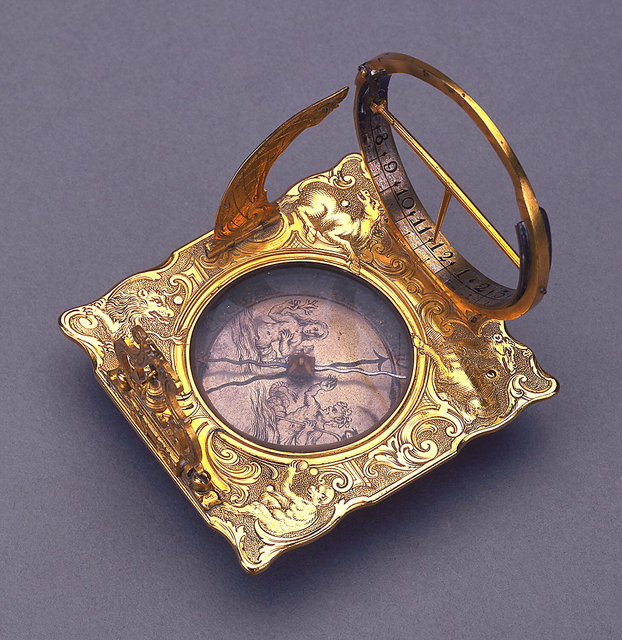Here is an object that any traveler, especially myself, would be happy to pop in their bag. That will not come to pass, but I can still ponder how I would impress fellow adventurers with this beautiful gilt brass, steel and glass wonder. This portable equatorial sundial, of 1748, is a finely crafted instrument by Jacob Emanuel Laminit. Laminit lived and worked in Augsburg, Germany arguably one of the premiere centers of scientific gadgetry in its day. It was here that some of the world’s most beautiful sundials were constructed. This particular piece has added features—a pop-up hour circle and latitude arc. A traveler need never wonder the time or get turned around with this portable sundial tucked in their pocket.
The 18th century brought a heightened interest in exploration—geography, foreign lands and their cultures stirred the imagination. There was also a keen desire to understand the stars, and the idea of astrophysical exploration piqued the interest of many. Laminit used the process of gilding, which is the application of fine gold leaf or powder, to enhance the surface of his sundial. This technique enabled him to accentuate the delicate scrolled square frame. Each of the four corners of the sundial depicts an animal: a horse, a lion, a camel and a monkey. These animals are allegories for the four continents: Europe, Africa, Asia, and the Americas. As travel was long over treacherous seas, mythical sea creatures were commonplace on maps in the 15th and 16th centuries. Perhaps the mermaid and triton on the face of Laminit’s sundial are a nod to this tradition. As the old saying goes, “Here be dragons.”
